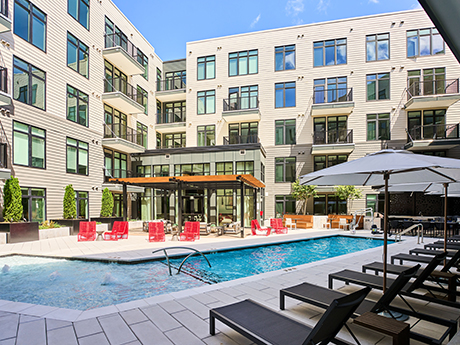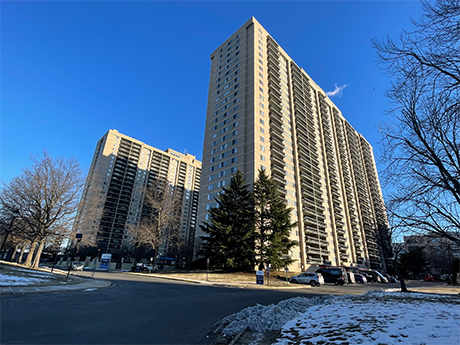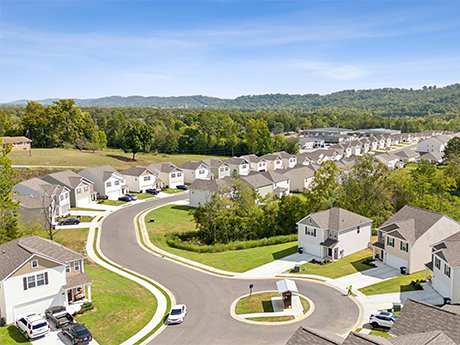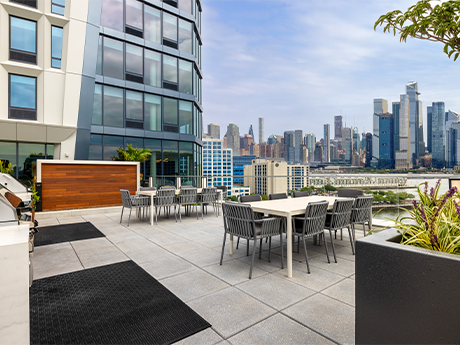ATLANTA — Andrew Layton, chief acquisition officer for Atlanta-based Student Quarters, knows that from a commercial real estate investment standpoint, the student housing sector possesses a key advantage: the relative permanence of many flagship universities nationally. “There is no risk of the University of Kentucky uprooting itself from Lexington and moving to Frankfort anytime soon. In the conventional multifamily world, neighborhoods come, neighborhoods go. What was hot yesterday may not be so hot today. What was cold yesterday may be the flaming new market tomorrow. That’s just not the case in what we do,” emphasized Layton, who leads the origination and underwriting efforts involving both the acquisition and development of student housing assets for the Student Quarters’ investors. “There’s a sense of permanence [surrounding these academic institutions], and if you can get on the ground and do your due diligence, you can figure out relatively easily where things work and where things don’t work in a student housing market.” Student Quarters owns and operates over 13,000 beds nationally, stretching east to west from Clemson, South Carolina, to Tempe, Arizona; and north to south from East Lansing, Michigan, to Tallahassee, Florida. The insights from Layton, who’s worked in the student housing …
Multifamily & Affordable Housing Feature Archive
DURHAM, N.C. — ZOM Living, in partnership with AEW Capital Management, has delivered Maizon Durham, a 248-unit luxury apartment community located at 500 E. Main St. near the historic American Tobacco Campus in Durham. The project team included architecture firm Hord Coplan Macht and interior designer One Line Design. Maizon Durham offers one-, two- and three-bedroom floorplans ranging in size from 558 to 1,450 square feet. Amenities include a swimming pool with a sundeck and lounge seating and a fitness center with a dedicated recovery room and spin studio. Additional community spaces include a pet spa, coworking areas, conference rooms, private offices, quiet zones, a resident café and a 24-hour marketplace, as well as 13,000 square feet of street-level retail space.
Affordable HousingDistrict of ColumbiaFeaturesHeartland Feature ArchiveMultifamilyMultifamily & Affordable Housing Feature ArchiveNortheast Feature ArchiveSoutheastSoutheast Feature ArchiveTexas & Oklahoma Feature ArchiveWestern Feature Archive
Why Fannie Mae, Freddie Mac Believe the Wind Is at Their Back
by John Nelson
Fannie Mae and Freddie Mac are adopting a more pro-business approach when it comes to closing multifamily loans in 2025 than in recent years, when sources say they were more selective. The two government-sponsored enterprises (GSEs) combined to produce 33 percent more multifamily loans in first-quarter 2025 compared with first-quarter 2024. “There is definitely a ‘volume on’ mindset at both shops,” says Landon Litty, director of agency sales at BWE. “This is a real positive for borrowers.” For Fannie Mae, the volume of multifamily loans totaled $11.8 billion in the first quarter of 2025, compared with $10.1 billion in the first quarter of 2024. Meanwhile, Freddie Mac produced approximately $15 billion in multifamily loans in the first quarter, financing around 144,000 rental units, well above the approximately $10 billion produced in first-quarter 2024. “The first quarter of 2025 has been dynamic, with real-time adjustments to meet market needs while maintaining a focus on soundness,” says a spokesperson at Freddie Mac Multifamily. Other sources attest that the GSEs are focusing on their sponsors more so than in previous years. T.J. Edwards, chief production officer for the multifamily finance division at Walker & Dunlop, says the agencies are proactively vetting first-time borrowers …
Late last summer, optimism ran steady across the multifamily investment sales market. Prior to the Federal Reserve’s initial rate cut in September 2024, interest rates had remained stable throughout the year. The outlook was positive. But that more ebullient market proved temporary. The Fed’s interest rate cut had a positive effect on the secured overnight financing rate (SOFR), which fell from 5.3 percent on Sept. 18, 2024, to 4.3 percent in early February 2025. The U.S. 10-year Treasury yield rose during the same period. On Sept. 18, 2024, the 10-year yield closed at approximately 3.7 percent, and it stands at 4.5 percent as of Feb. 17. As a result of these factors, a bid-ask spread between apartment buyers and sellers has re-emerged, and transactions largely continue to follow the lackluster pace emblematic of the market since the cost of capital skyrocketed over a roughly 18-month period beginning in early 2022. The lack of sales has also suppressed the plans of property investors who want to take advantage of Section 1031 of the U.S. Internal Revenue Code. The provision allows sellers to defer paying capital gains taxes by using the sales proceeds to buy a similar, or “like-kind,” asset. But upon …
Security is a top priority in the multifamily industry. Monitoring and controlling access to a property protects owners and their residents from the impacts of violent crime, theft, vandalism and trespassing. The benefits of an effective security, monitoring and access system run deep. “Access control is not just about security,” says Roger Solomon, a senior associate at Trio Advisory Group. The company offers consulting services on access control, video surveillance and other technologies for commercial real estate properties. “Access control is also about ensuring convenience for residents and staff, enhancing the overall quality of life at a community and future-proofing assets against technological advancements,” says Solomon. “The right access control system will add real value to both the property and for its residents.” The type of access control system an owner-operator installs can increase operational efficiency and net operating income, free up staff, reduce costs and lower resident turnover rates. Locks and Keys Still Popular Option The benefits of an old-fashioned lock-and-key system are clear. Mechanical locks are weatherproof and do not require electrical power or Wi-Fi connectivity. Key-controlled locks also are relatively affordable to install. According to a report from the National Apartment Association (NAA), 53 percent of property management …
Conference CoverageFeaturesGeorgiaMultifamilyMultifamily & Affordable Housing Feature ArchiveSoutheastSoutheast Feature Archive
Stickiness of Renter Sets Build-to-Rent Sector Apart from Traditional Multifamily, Says InterFace Panel
ATLANTA — When considering a single-family, build-to-rent (BTR) development or acquisition, the main priority of the developer or investor is to focus on finding a place where people want to live, said Zach Persky, vice president of acquisitions for Quinn Residences. Access to jobs, retail corridors and good school districts are all important factors for potential residents. Persky was one of the speakers on the BTR panel at the 15th annual InterFace Multifamily Southeast conference, which took place Wednesday, Dec. 4 at the Cobb Galleria Centre in Atlanta. Kyle Palmer, managing partner of Palmer Real Estate Investment Services, moderated the discussion. Editor’s note: InterFace Conference Group, a division of France Media Inc., produces networking and educational conferences for commercial real estate executives. To sign up for email announcements about specific events, visit www.interfaceconferencegroup.com/subscribe. While the BTR segment may still be in its infancy, its fundamentals are solid, according to the panel. Demand comes from would-be homebuyers who are priced out of the single-family market. These purpose-built rentals have many of the same perks of for-sale homes, such as yards and private garages, without the handicaps of down payment and mortgage commitment. BTR construction completions nationally totaled more than 50,000 units …
Conference CoverageFeaturesGeorgiaMultifamilyMultifamily & Affordable Housing Feature ArchiveSoutheastSoutheast Feature Archive
InterFace: Multifamily Investors Are Bullish on 2025 Sales Market, Though Many Hurdles Will Carry Over into New Year
by John Nelson
Speakers on the investment sales panel at the annual InterFace Multifamily Southeast conference were overall bullish on the sector’s investment prospects in the new year. The event, now in its 15th year, was held on Wednesday, Dec. 4 at the Cobb Galleria Centre in Atlanta. To kick off the panel, moderator Paul Berry, president and COO of Mesa Capital Partners, discussed what a recovery could look like in terms of investment sales volume. Editor’s note: InterFace Conference Group, a division of France Media Inc., produces networking and educational conferences for commercial real estate executives. To sign up for email announcements about specific events, visit www.interfaceconferencegroup.com/subscribe. Berry said that in the six years leading up to the onset of the COVID-19 pandemic, annual U.S. multifamily investment sales volume hovered between $155 billion to $195 billion per year. He noted that due to robust inventory growth during that time, a “normal” yearly sales total would average out to $180 billion to $190 billion. “2021 saw ‘double normal’ — it was $350.7 billion,” said Berry. “The first three quarters of 2022 were at that same level before it slowed down by the end of the year, but it still eclipsed $300 billion.” He …
Amenities are the personality of a multifamily property. They proclaim a community’s individuality and lure tenants with promises of a fun, relaxing or convenient lifestyle. What counts as a multifamily amenity today? If most renters and homeowners are accustomed to robust Wi-Fi or controlling their heating and air conditioning through their phones, is a smart thermostat or bulk internet something to advertise as an “extra,” or are these features a given nowadays, like a fridge or a microwave? “Want versus need is a spectrum when it comes to multifamily amenities,” says Meg Spriggs, managing director of development, Americas, with New York City-based Lendlease. “The amenities renters need do not necessarily have the same wow factor as those they may want. In fact, you can’t even see some of them, such as fast and reliable internet service. Fitness centers, package systems, dog runs and electric vehicle (EV) charging stations are other check-the-box items that, in some cases, are non-negotiables,” says Spriggs. Wi-Fi and EV outlets may be essentials, but they’re not always clinchers for prospective renters on the fence about where to live. This is when the wow factor takes over. Recording studios, on-site beekeeping, private speakeasies, meditation pods, maker spaces, …
FeaturesHeartland Feature ArchiveMultifamily & Affordable Housing Feature ArchiveNortheast Feature ArchiveSoutheast Feature ArchiveTexas & Oklahoma Feature ArchiveWestern Feature Archive
Forecast Survey: What’s Your Take on Commercial Real Estate in 2025?
by John Nelson
The editors of REBusinessOnline.com are conducting a brief online survey to gauge market conditions in 2025, and we welcome your participation. The survey should only take a few minutes to complete. Questions range from property sectors that you are most bullish on heading into 2025 to trends in deal volume to your outlook for interest rates. The results of our 14th annual survey will be compiled and published in the January issues of our regional magazines. Conducting these surveys is part of our mission at France Media to provide readers with indispensable information, and we couldn’t do it without your help. To participate in our broker/agent survey, click here. To participate in our developer/owner/manager survey, click here. To participate in our lender/financial intermediary survey, click here. (Note: Please remember to click on “done” to properly submit the survey.)
DevelopmentFeaturesHeartland Feature ArchiveMidwestMultifamilyMultifamily & Affordable Housing Feature Archive
Construction Sector Braces for Dry Spell in New Apartment Development
by Jeff Shaw
— By Lynn Peisner — Developers and owners are optimistic a slowdown in construction over the next two years will help boost occupancies and rents by cutting into the market-rate supply overhang. This may be good news for owners of existing assets, but it’s less than ideal for those who make a living in the construction business. Or so it would seem. Most construction leaders are unfazed by an impending drought in new development. Some firms say they will rely on other sectors of commercial building to sustain them through the lull in apartment projects. Overall, the consensus among builders is that multifamily remains a secure line of business due to the high cost of owning a single-family home and a shortage of affordable housing. Construction Companies Adapt The National Association of Home Builders (NAHB) expects multifamily starts this year to total 342,000, down 28 percent from 2023. The recent peak was in 2022 when construction starts totaled 547,000. In its U.S. Real Estate Market Outlook 2024, CBRE concluded that this decline in construction starts means that new deliveries annually will be reduced to less than half the current level by 2026. “The pace of multifamily construction starts has slowed this …
Newer Posts











